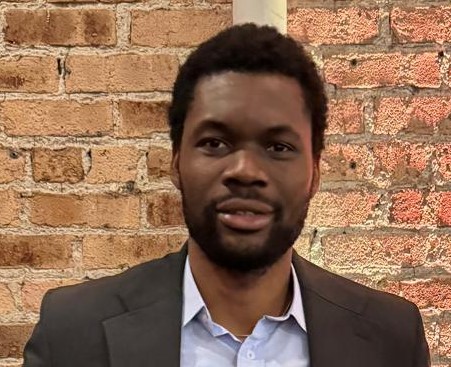By Experience Efeosa Akhigbe
I believe energy is the backbone of economic and social development. However, in Nigeria, millions of people, especially in rural areas, still lack access to reliable electricity. This lack of energy access stifles economic opportunities, limits education and healthcare services, and contributes to poor living standards. Addressing this challenge requires a combination of robust energy infrastructure and innovative financing models. One of the most promising solutions is the Public-Private Partnership (PPP) model, which can drive investments and ensure sustainable energy access for rural communities. Having worked on infrastructure financing and renewable energy projects, I have seen firsthand how structured partnerships between the public and private sectors can unlock economic potential and transform lives.
The Energy Deficit in Rural Nigeria
Despite Nigeria’s abundant energy resources—including crude oil, natural gas, hydro, and solar—over 85 million Nigerians remain without electricity, making it the country with the highest energy access deficit globally. The rural population is disproportionately affected due to poor grid extension, high infrastructure costs, and unreliable electricity distribution networks. In my role at PwC and EY, I have worked on infrastructure financing projects that highlight the critical need for targeted investments in energy access. I have seen cases where businesses in rural communities struggle with productivity because they lack reliable power sources, making it evident that sustainable solutions must be implemented at scale.
The Importance of Energy Infrastructure
Energy infrastructure, including power generation, transmission, and distribution systems, is critical for sustainable economic growth and social development. Without reliable infrastructure, businesses cannot thrive, healthcare facilities cannot function optimally, and schools remain in darkness. I have advised on energy transactions, including renewable energy projects aimed at enhancing off-grid supply, helping financial institutions refine lending criteria to increase financing to off-grid developers. These initiatives have demonstrated that when structured effectively, energy infrastructure projects can be both commercially viable and socially impactful.
The Role of the PPP Model in Expanding Energy Access
A Public-Private Partnership (PPP) model leverages both government and private sector expertise and resources to develop and expand energy projects. PPPs allow for shared investment, risk mitigation, and efficient project implementation. Having facilitated transaction advisory support for energy and infrastructure projects, I have witnessed the power of strategic partnerships in overcoming financial and operational barriers to electrification.
Key Benefits of the PPP Model:
- Increased Investment and Funding: The Nigerian government alone cannot finance the estimated $23 billion required for universal electricity access by 2030. Through my work on structuring investment strategies, I have seen how PPPs attract private investors and development partners, thereby reducing financial strain on the government.
- Efficiency and Innovation: Private sector participation brings technological innovation, efficiency in project execution, and effective service delivery.
- Scalability and Sustainability: PPPs encourage long-term sustainability by ensuring energy projects are commercially viable, thus preventing dependency on government subsidies.
- Encouragement of Renewable Energy: Many PPP-led projects prioritize clean energy solutions, such as solar mini-grids, which are more viable for rural electrification. I have contributed to feasibility assessments for renewable energy investments, emphasizing the importance of long-term sustainability.
Successful PPP-Led Energy Initiatives
Countries like Kenya and Rwanda have successfully expanded rural energy access using the PPP model. In Kenya, the government partnered with private firms to establish off-grid solar power projects, significantly improving rural electrification rates. Nigeria has also begun implementing PPP projects, such as the Rural Electrification Agency’s (REA) partnership with private developers to build solar mini-grids, benefiting thousands of rural households. I have worked on infrastructure projects that align with these strategies, conducting financial modeling and viability assessments to ensure that private-sector-led initiatives in Nigeria are financially feasible and impactful.
Challenges and the Way Forward
While PPPs present a viable solution, several challenges hinder their full implementation in Nigeria. Regulatory barriers and bureaucratic bottlenecks create uncertainties that deter potential investors. Inconsistent policies and lengthy approval processes make it difficult for private entities to navigate the energy sector. Additionally, corruption and a lack of transparency in project execution further discourage investor confidence.
Another critical challenge is the financial risk associated with rural electrification projects. Many rural consumers have low purchasing power, making cost recovery difficult for private investors. Without adequate financial incentives, such as subsidies or tax breaks, private companies may be reluctant to invest in long-term energy projects.
To address these issues, Nigeria must strengthen its policy and regulatory frameworks to create an investor-friendly environment. A clear, consistent, and enforceable policy landscape will instill confidence in private investors and ensure seamless collaboration between the government and private sector. Transparency and accountability should also be prioritized to eliminate corruption and enhance project implementation.
Furthermore, the government must introduce attractive financial incentives to encourage private sector participation. These could include tax incentives, grants, and concessional loans to reduce the financial burden on investors. By ensuring a fair return on investment, Nigeria can attract more private entities into the energy sector.
International partnerships will also play a crucial role in bridging the energy gap. Collaborating with organizations such as the World Bank and the African Development Bank can provide the necessary funding and technical assistance to scale up energy projects. Nigeria must actively seek global support to supplement its efforts in achieving universal energy access.
Expanding energy access to rural Nigeria is a national imperative that requires bold and innovative solutions. My experience in infrastructure financing, transaction advisory, and renewable energy development has reinforced my belief that a robust energy infrastructure, supported by the PPP model, can bridge the energy gap, drive economic growth, and improve the quality of life for millions. By fostering collaboration between the government, private sector, and international partners, Nigeria can achieve universal energy access and pave the way for a brighter and more prosperous future.






